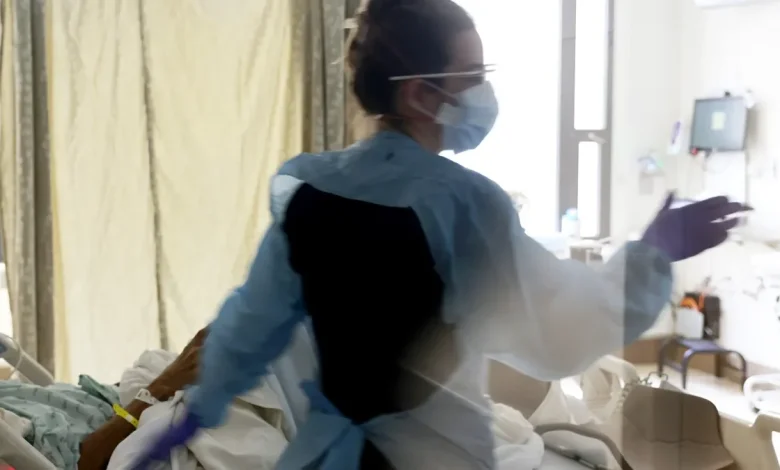Nursing is no longer considered a ‘professional degree.’ What changed?

Watch this baby prove that laughter is the best medicine
An adorable 8-month-old boy, Ja’Cere Dikai Stewart, bursts out laughing during a nurse’s examination in Lancaster, California.
USA Today
As President Donald Trump’s administration redefines which degrees are considered “professional,” many graduate students are left with questions and concerns about how to finance their education.
With a current list and definition of “professional degrees” used by the Department of Education, which omits some professions like nursing, here’s what to know about which programs are listed and what it could mean for students.
What is a professional degree?
The confusion and controversy stem from a 1965 federal law, which defines a “professional degree” as one that “signifies both completion of the academic requirements for beginning practice in a given profession and a level of professional skill beyond that normally required for a bachelor’s degree.”
The definition goes on to list examples of a professional degree, including:
- Pharmacy (Pharm.D.)
- Dentistry (D.D.S. or D.M.D.)
- Veterinary Medicine (D.V.M.)
- Chiropractic (D.C. or D.C.M.)
- Law (L.L.B. or J.D.)
- Medicine (M.D.)
- Optometry (O.D.)
- Osteopathic Medicine (D.O.)
- Podiatry (D.P.M., D.P., or Pod.D.)
- Theology (M.Div., or M.H.L.)
While the definition states that the list is not exhaustive and that professional licensure is also generally required, past Department of Education committee meetings this fall to discuss student loan regulations and other issues have used the initial description that includes only those ten degrees.
What degrees are not classified as professional?
Multiple graduate programs are left off the “professional degree” list, including nursing, sparking responses from national organizations and groups advocating for a wider range of degrees to be represented under the umbrella.
In an Aug. 28 letter to the Office of Postsecondary Education, the American Council on Education has pushed for changing the definition and adding more programs, including nursing, architecture, accounting, occupational therapy, physical therapy, special education, public health, social work and more.
The American Nurses Association has also expressed concern with the current definition, with association President Jennifer Mensik Kennedy saying in a letter that excluding nursing will “severely restrict access to critical funding for graduate nursing education, undermining efforts to grow and sustain the nursing workforce.”
“At a time when healthcare in our country faces a historic nurse shortage and rising demands, limiting nurses’ access to funding for graduate education threatens the very foundation of patient care,” Mensik Kennedy said. “In many communities across the country, particularly in rural and underserved areas, advanced practice registered nurses ensure access to essential, high-quality care that would otherwise be unavailable. “
How can it impact students?
Currently, the definition is being used in discussions surrounding student loan caps under the Trump Administration’s “Big Beautiful Bill,” which could drastically impact how much students are allowed to borrow. The bill eliminates the Grad PLUS loan program, which has historically helped students pursue careers in medicine, law and other training-intensive careers, and places caps on the Parent PLUS program, limiting them to $20,000 per year per student, with a $65,000 total limit.
Graduate students pursuing “professional degrees” on the defined list are able to borrow up to $50,000 per year and up to $200,000 overall. But for students in graduate programs that are not considered “professional degrees,” loans are capped at $20,500 per year. Graduate programs are limited to $100,000 overall.
This means students in programs not listed on the list or defined as a “professional degree” could face a lower loan cap when pursuing those programs. The loan changes — and overall adjustments to higher education finances and funding — are slated to take effect on July 1, 2026.
This story has been updated with new information.
USA TODAY’s Zachary Schermele contributed to this report.





